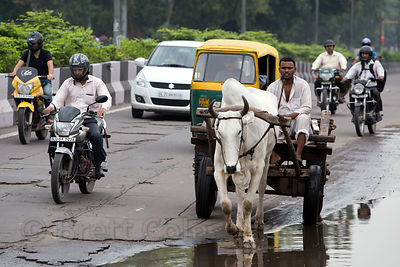I have a peculiar aversion to motorcycles, the reasons of which are not particularly difficult to fathom. It is not only the sheer numbers of these ‘hell horses’ and the way people drive them, but also the noise they create and the number of road traffic accidents they cause and the death and disability that follows.
According to the World Health Organization’s (WHO) Global Health Observatory (GHO) data there were some 1.25 million road traffic deaths annually in the year 2013. Most of these occured in low and middle income countries and almost half of these occured among those with the least protection, namely, motorcyclists, cyclists and pedestrians. The data from India are as alarming. According to the National Crime Records Bureau, Ministry of Road Transport and Highways and Law Commission of India Global status report on road safety, 2013, there is one death every four minutes due to road accident in India. Of these 16 casualties per day are children. This number of people killed on the roads reached 1,37,000 in 2013. Out of these accidents, two wheelers account for 25% of all the accidents – 25%.
But this is not the end of it; sample this – for a country which witnesses 1214 road crashes every day killing approximately 377 people, you know how many motorcycles we have running on the roads? Hold you breath! A rough estimate puts the figures of two wheelers on roads in India at approximately 118.65 million! Wow! This is the figure calculated for motorcyles sold between 1995 and 2015. And did you know that India is the largest manufacturer of two wheelers and and tractors in the world? Yes. The annual production of two wheelers in India is nearly 19.9 million units, of which nearly 2.34 million are exported and the rest (17.59 miilion units) are consumed in the dometic market – 17.59 million two wheelers added every year!!!!
So here we are, selling millions of motorcycles to the people every month, with pitiable infrastructure, negligible traffic etiquettes or social responsibilities and almost no traffic regulation – self-imposed or otherwise. No wonder India leads the world in road deaths. Besides the deaths it causes, road traffic accidents are also a major cause of significant disability and social burden.
One of the most disabling injuries caused by motorcycle accidents is the Brachial Plexus injury. The Brachial plexus is a complex network of nerves exiting the spinal cord from the neck area, in between the vertebrae, and helping with the sensation and movement of the upper limbs on both the sides. The nerves emerge from the spine as five roots which after clearing the bony confines of the spine fan out in the neck and intermingle with each other, forming a plexus and sharing their sensory and motor fibres. A little down, this plexus sorts itself out into trunks and cords and thence the major nerves which supply the upper limb. Motorcycle accidents are one of the major causes of traction injury or direct trauma to the neck or the shoulder region leading to temporary or permanent damage to these nerves. The extent and type of the injury can vary from minimal to global and from reversible to irreversible or permanent, respectively. In the more severe injuries the affected limb hangs limply by the side, shorn of all movement and sensation.
The brachial plexus injury is bad news to both the patient and the surgeon caring for the patient. A majority of traffic accidents cause global or pan brachial plexus injuries with very limited scope for improvement, even with heroic surgeries and prolonged post-operative rehabilitation programs. In such cases the best we can hope for is for the patient to be able to gain basic movements at each of the major joints so that that arm may be used for eating food or, at the very least, as a supportive prop for the other functional limb. Anyway one looks at it; it is not a pretty picture and even more so because the average patient with such a bad injury is usually in the prime of his youth. It is a classic example of how one’s life can change so radically in a matter of a few moments. One adrenaline surge, that last can of beer that you had, your first bike race or showing off bike stunts to your new girlfriend; all these can potentially lead to this scenario and thence to a lifetime of disability and despair. My advice to my young friends reading this – don’t do it!
‘The Battle of Panchavati‘ a new Amazon Bestseller by the author, now available at Amazon as paperback and ebook.

Very well said
LikeLiked by 1 person
Thanks. Appreciate your comments!
LikeLike
good job. well written.
LikeLiked by 1 person
Thank you Gaurav! Appreciate you spending the time and effort to read the blog and post a comment!
LikeLike
Interesting and informative. Well compiled.
LikeLiked by 1 person
Thank you! Appreciate you taking out the time and effort to read and comment!
LikeLike
Being the wife of a neurosurgeon and sharing your aversion to this hell horse, I cud not agree more with you.
Maybe u cud write in the print media too
Well done
LikeLiked by 1 person
Thank you Madam. I tried the print media but was turned away hence this blog! Appreciate your feedback!
LikeLike
Wonderfully written papa !! 👍👍
LikeLiked by 1 person
Thanks Betu! 😘
LikeLike
Very well written!!
LikeLiked by 1 person
Thanks Vaishali!
LikeLike
Was a good read,proud of you boss.
LikeLiked by 1 person
Thanks Pragya. Please read the other ones too!!!
LikeLike
Well written Divya
Informative as well as cautionary. Sad to see so many preventable deaths just like Tobacco !!
LikeLiked by 1 person
Thanks boss!
LikeLike
good
LikeLike